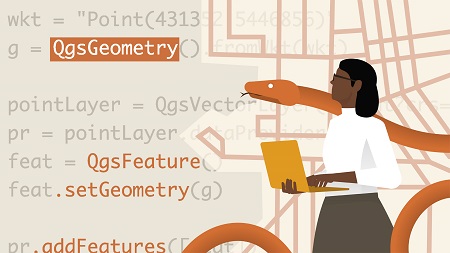
English | MP4 | AVC 1280×720 | AAC 48KHz 2ch | 2h 18m | 479 MB
QGIS is an open-source tool for quickly visualizing and analyzing geospatial data for architecture, engineering, and construction (AEC). One way to make QGIS even more versatile and efficient is to add the power of Python. In this course, CAD and GIS consultant Gordon Luckett shows how to use Python scripting to automate and augment the QGIS toolset. It starts with an overview of Python programming basics, including creating and saving basic scripts. Then Gordon shows how to automate common QGIS tasks, such as opening, closing, and saving projects; adding new layers and layer definitions; and creating and managing geometry. Gordon also shows how to automate the import of AutoCAD data such as DWG and DXF files into QGIS projects, and closes the course with a hands-on demo of the QGIS plugin creation process, leveraging the Plugin Builder, QT Designer interface builder, and Python code.
Topics include:
- Creating your first Python script
- Saving scripts
- Managing QGIS projects and layers programmatically
- Exporting geometry
- Drawing new geometry
- Importing DWG and DXF files
- Creating plugins
Table of Contents
1 AEC with Python and QGIS
2 What is Python
3 Using the Python console
4 Creating your first Python script
5 Saving your Python scripts
6 Working with projects
7 Working with layers
8 Setting the CRS
9 Adding and creating layer definitions
10 Getting WKT from data
11 Exporting geometry
12 Filtering geometry
13 Drawing new geometry
14 Manually importing DWG
15 Using Python to import DXF
16 Converting lines to polygons with Python
17 Installing Plugin Builder
18 Using the Plugin Builder
19 Create a batch file to load Python bindings
20 Install plugin
21 Using Qt Designer
22 Adding Python to Plugin
23 Next steps
Resolve the captcha to access the links!